Abstract
In recent years, the white rot fungus Phanerochaete chrysosporium has shown promise as an organism suitable for the breakdown of a broad spectrum of environmental pollutants, including polynuclear aromatic hydrocarbons (PAHs). The focus of this study was to determine whether P. chrysosporium could effectively operate in an actual field sample of oil tar-contaminated soil. The soil was loaded with [14C]phenanthrene to serve as a model compound representative of the PAHs. Soil with the native flora present under static, aerobic conditions with buffering (pH 5.0 to 5.5) displayed full mineralization on the order of 20% in 21 days. The addition of P. chrysosporium was synergistic, with full mineralization on the order of 38% in 21 days. In addition to full mineralization, there was an increase in the proportion of radiolabelled polar extractives, both soluble and bound, in the presence of P. chrysosporium. From this study, it is apparent that the native soil microflora can be prompted into full mineralization of PAHs in some contaminated soils and that this mineralization can be enhanced when supplemented with the white rot fungus P. chrysosporium. With further refinement, this system may prove an effective bioremediation technology for soils contaminated with PAHs.
Full text
PDF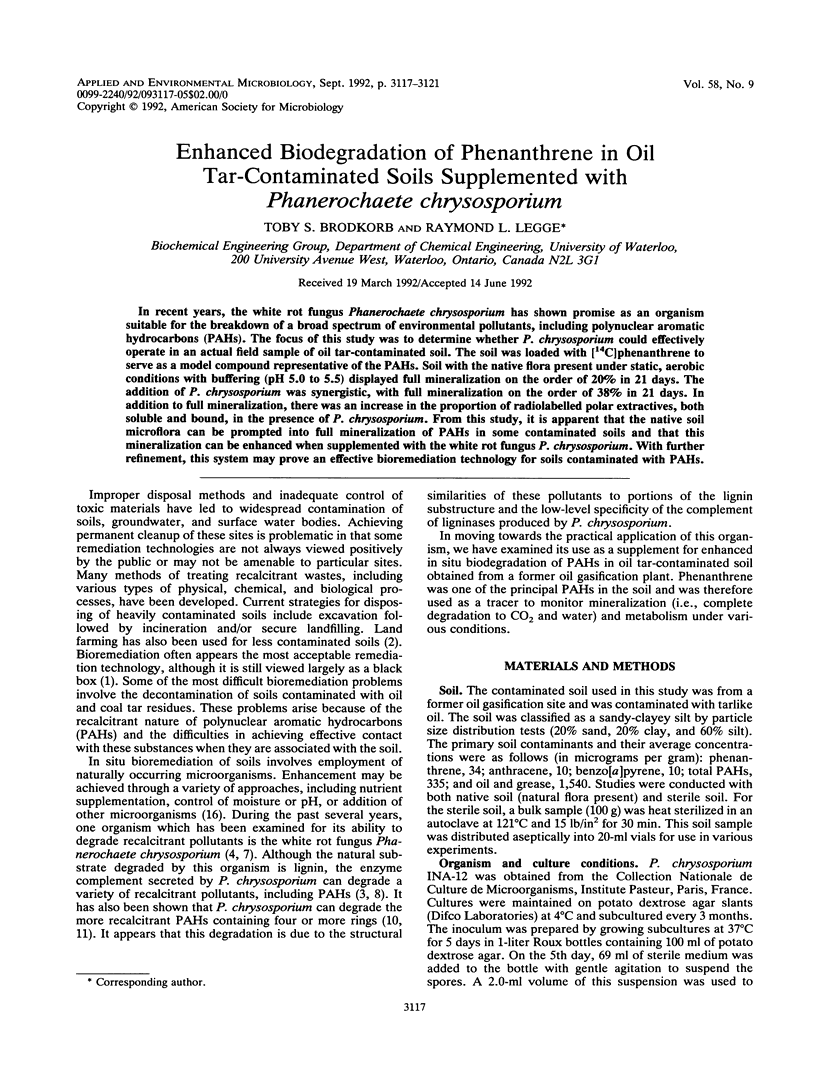
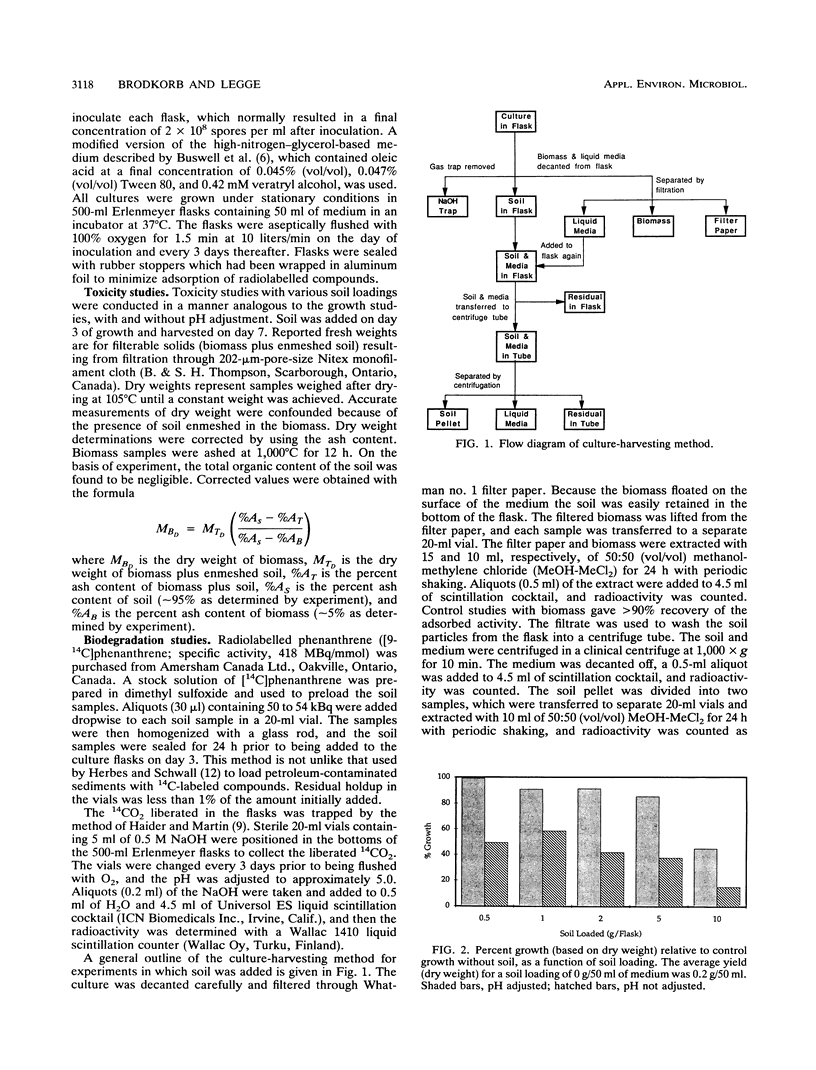
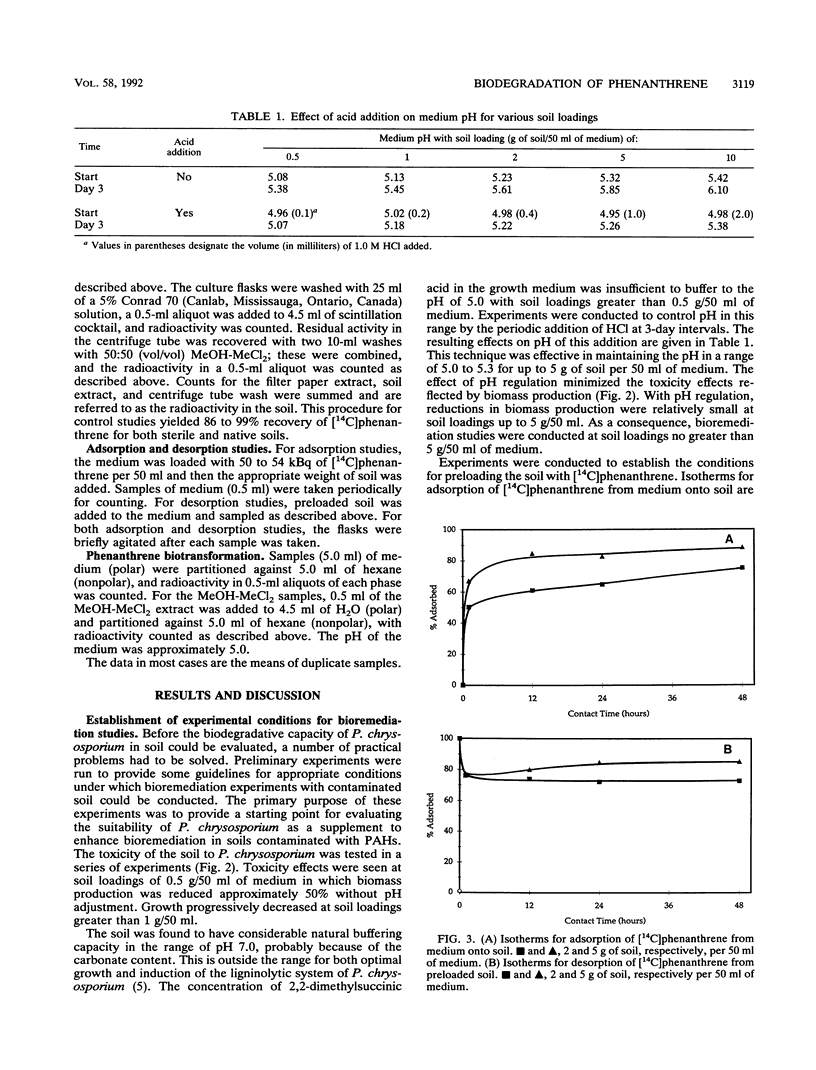
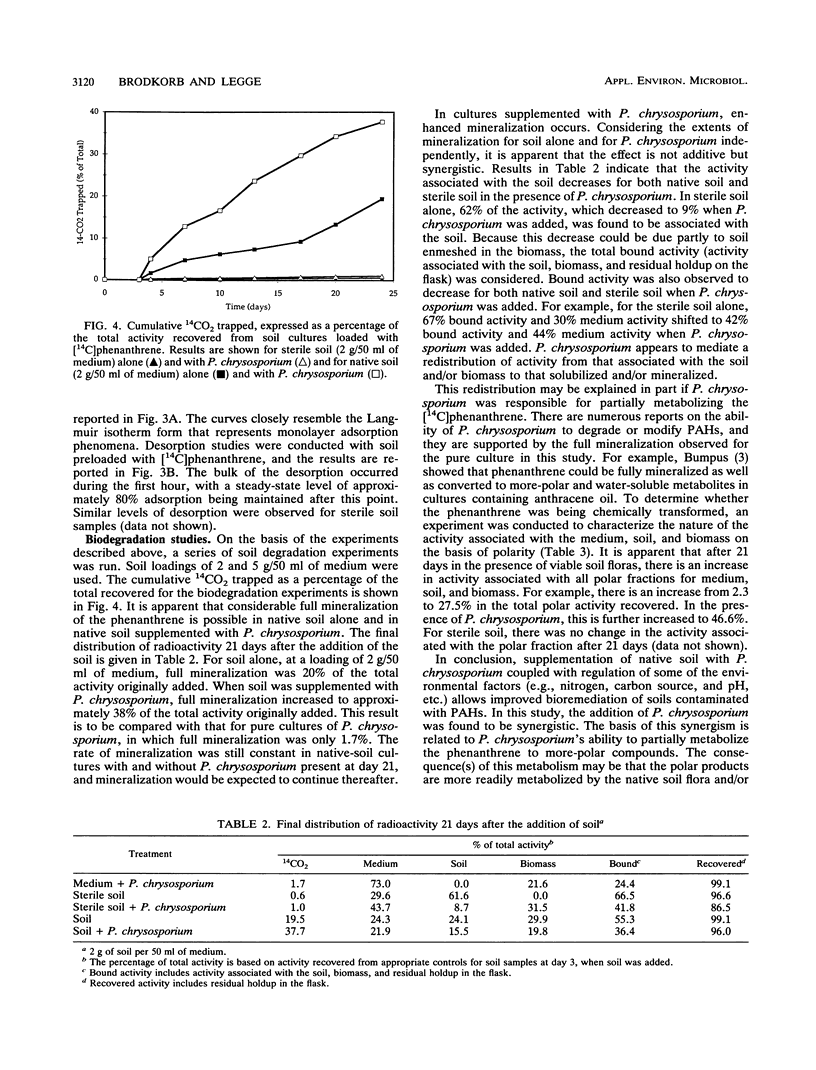
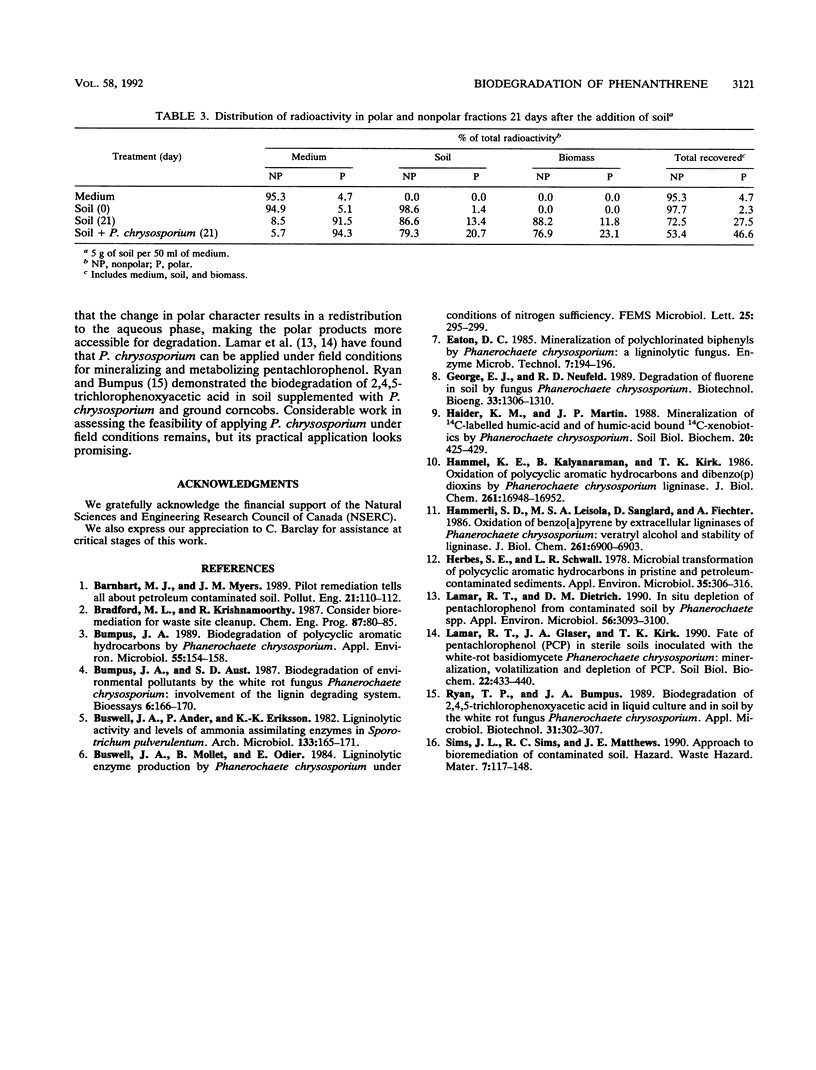
Selected References
These references are in PubMed. This may not be the complete list of references from this article.
- Bumpus J. A. Biodegradation of polycyclic hydrocarbons by Phanerochaete chrysosporium. Appl Environ Microbiol. 1989 Jan;55(1):154–158. doi: 10.1128/aem.55.1.154-158.1989. [DOI] [PMC free article] [PubMed] [Google Scholar]
- Haemmerli S. D., Leisola M. S., Sanglard D., Fiechter A. Oxidation of benzo(a)pyrene by extracellular ligninases of Phanerochaete chrysosporium. Veratryl alcohol and stability of ligninase. J Biol Chem. 1986 May 25;261(15):6900–6903. [PubMed] [Google Scholar]
- Hammel K. E., Kalyanaraman B., Kirk T. K. Oxidation of polycyclic aromatic hydrocarbons and dibenzo[p]-dioxins by Phanerochaete chrysosporium ligninase. J Biol Chem. 1986 Dec 25;261(36):16948–16952. [PubMed] [Google Scholar]
- Herbes S. E., Schwall L. R. Microbial transformation of polycyclic aromatic hydrocarbons in pristine and petroleum-contaminated sediments. Appl Environ Microbiol. 1978 Feb;35(2):306–316. doi: 10.1128/aem.35.2.306-316.1978. [DOI] [PMC free article] [PubMed] [Google Scholar]
- Lamar R. T., Dietrich D. M. In Situ Depletion of Pentachlorophenol from Contaminated Soil by Phanerochaete spp. Appl Environ Microbiol. 1990 Oct;56(10):3093–3100. doi: 10.1128/aem.56.10.3093-3100.1990. [DOI] [PMC free article] [PubMed] [Google Scholar]


